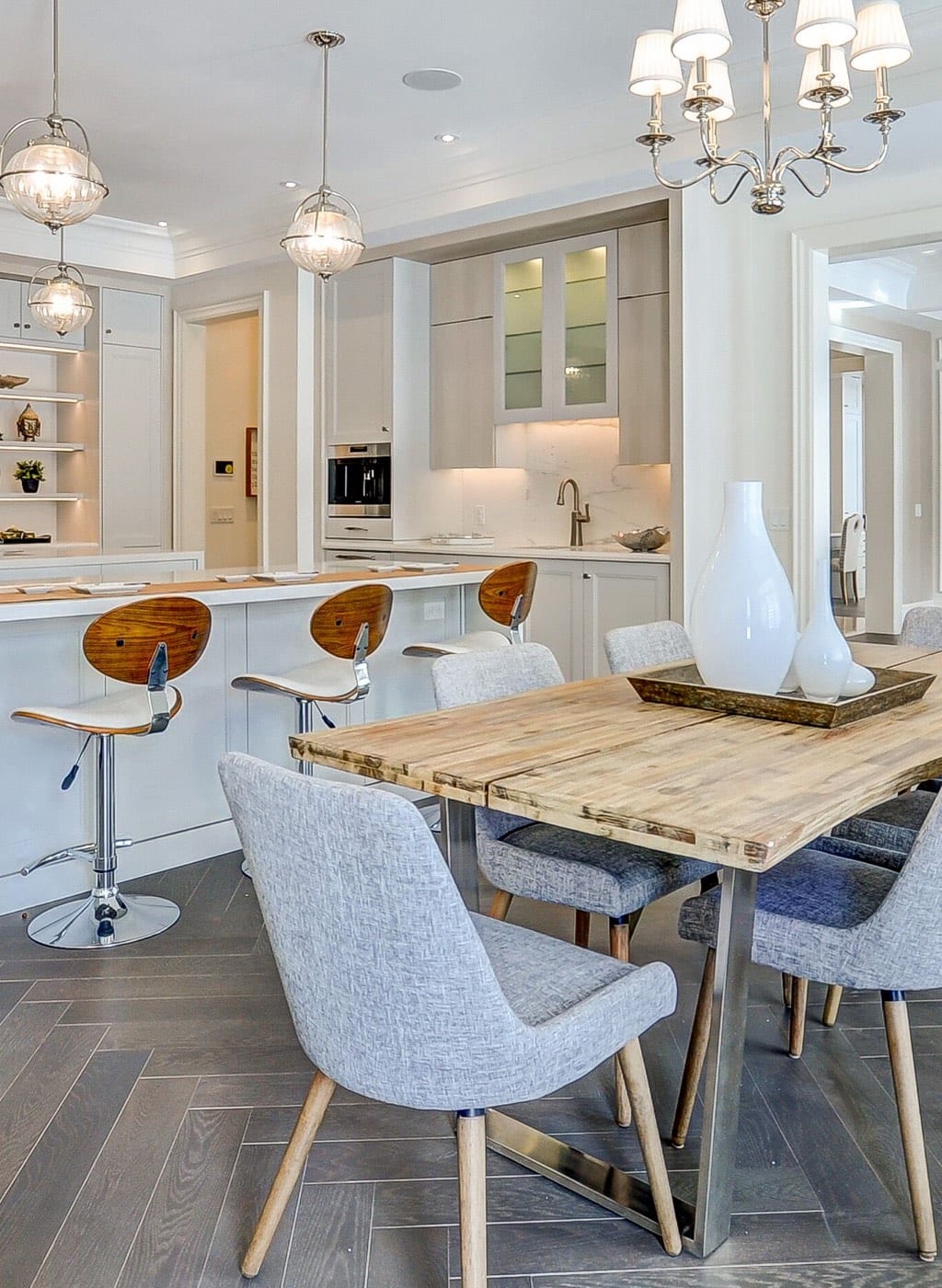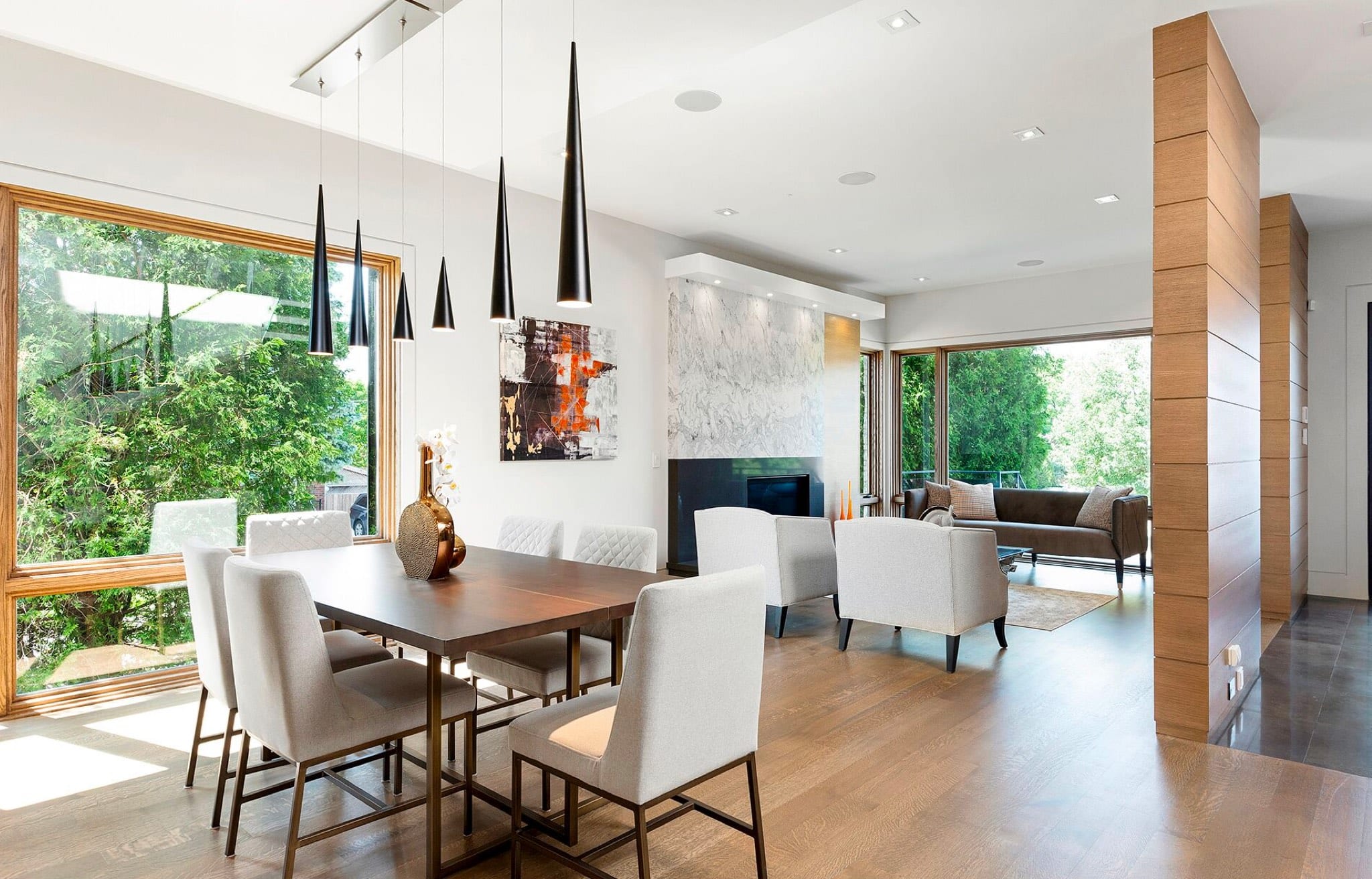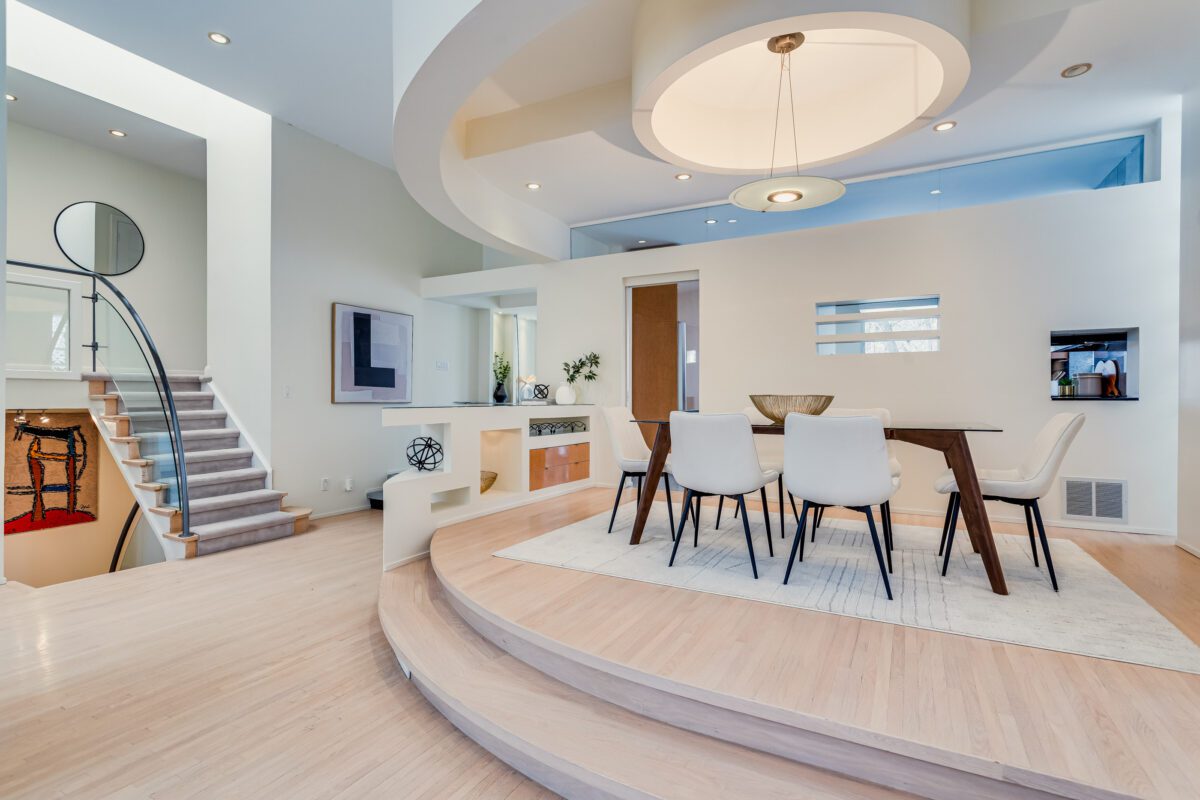
Takeaways from a Designer’s Own New Build
By Harvey Wise
Several years ago, I sold a wonderful home on Farnham Avenue that I’d gutted and renovated. After the sale, I decided to build my own new home from the ground up. I’ve been doing this for clients for years and relished the opportunity to do it for myself. Soon after, I came upon a property on Vesta Drive that was exactly what I was looking for. Although the lot was a bit less than 40 feet wide, it was 150 feet deep, and I knew I could get approval for a large enough home. I secured the property and embarked on an exciting new project to build my own home and become my own client.
From my experience, there are four main steps in building a new home from the ground up. I’d like to touch on each to illustrate the process.
- Design Planning
A new build project like this does not come together without proper planning. I spent months working with an architect and a landscape designer to fully detail the exterior of my new home. For the interior, I have an office of talented designers who assisted me in designing all the hard finishes. We worked diligently to complete our plans before the first shovel hit the ground. This was helpful in getting the project started right and to keep things moving forward.
In addition, there are key areas to consider when planning a new build:
- Have a complete furniture plan to provide the basis for all other design decisions.
- Know and understand the sequence in which design decisions need to be made, as they impact every construction decision. For example, the design, size, and position of your cabinetry impact plumbing and electrical decisions.
- Consider your lifestyle and how you plan on using each space before you finalize any design. In my case, I decided to keep my kitchen and family room divided with two equal openings to maintain a sense of separation while not restricting flow. It was also imperative that I had an eat-in kitchen with a separate breakfast area.
- Walk through the house in your mind and take note of special vignettes and vistas that you want to highlight. In the master en suite, I created an iconic vista by placing a freestanding bathtub centered in a bay window.
- Design Execution
When building a home, working with an interior designer is the best investment you can make. This will avoid many mistakes and oversights in new homes that are not planned or designed properly. When I embarked on my own project, I quickly discovered that making a multitude of decisions was overwhelming. To stay focused, I took the advice I give my own clients:
- Adopt an overall design concept and vision for your home. The most successful designed spaces are those that have consistency in design and stay true to the overall vision.
- Be thoughtful but firm in your decisions. Changes are the largest contributors to costly overruns and delays.
- When selecting finishes, consider carefully where you want to spend your money. Choose a few key areas to splurge on while staying cognizant of many other areas that you can be creatively economical. My big splurge in my home was the kitchen – particularly the polished nickel details and the high gloss walnut cabinetry.
- As a client, it is great to be able to partner with your designer and make collaborative decisions, however, be careful not to become an obstacle. Sometimes you should defer to the experts because they can see the big picture more easily than you can.
- Construction
The most challenging part of the new process is the construction period. This is not for the faint of heart and you need to be prepared for unexpected delays and cost overruns. Anyone who tells you otherwise either hasn’t been through it or is not being realistic.
Some key areas to consider when beginning include:
- Hire the best contractor that you can afford with the best references. The success of any construction project can be completely undermined by poor construction management.
- Be present and available at the right time for the right decisions. Projects are delayed, and in turn cost more, by not making decisions, or by decisions made without you that you later want to change.
- On the other hand, micro-managing a construction project will also lead to delays, errors, and costs. If you hire the right contractor in the first place and work with the right design team, you should not have to be involved too much. Let the professionals make the decisions you are paying them for.
- Decorating
Although this was a labour of love, the fun began when I started to furnish and decorate. A big challenge was finding time to focus on furnishings while still involved in the construction process. Make the time or you may find yourself moving into a beautiful but empty house.
- Start early, make firm decisions and don’t waiver. Lead times for fabrics and furniture can be as much as 12 to 14 weeks.
- Cast a wide net when selecting products from various suppliers. By mixing pieces from different sources, you can create a more individually curated look.
- Be consistent with your choices so you create a proper flow throughout your home.
- Mix old with new. The most beautiful homes combine cherished, older pieces with modern ones. For my contemporary master suite, I incorporated vintage Lucite lamps.
- The key to great design is an eclectic mix of timeless and classic pieces, so minimize the temptation to fill your house with the trendiest of details.
The process of building your home can be expensive, time-consuming, and exhausting, however, with proper planning, the rewards will outweigh the frustration. Would I do it again? Absolutely.
Harvey Wise Design is a full-service multi-disciplinary
interior design firm. harveywisedesign.com
Photo credit: Michael Graydon




